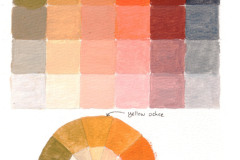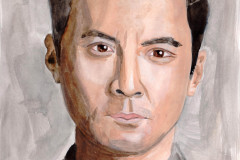Introduction
Building art transforms simple structures into visual masterpieces. It combines creativity with architecture to shape spaces that speak to people. With inspiring building art ideas, you can turn plain walls and regular roofs into artistic statements. These ideas enhance the beauty and meaning of buildings everywhere.
In this article, you’ll learn about styles of building art and see examples from around the world. You’ll discover how art and construction work together to craft unique environments. Whether you’re planning a project or just curious, these insights will guide you through making buildings into works of art.
What is Building Art and Why It Matters
Defining Building Art
Building art is more than just decorating a space. It’s when art is part of the construction itself, shaping how a building looks, feels, and interacts with people. Instead of merely adding paintings or sculptures afterward, the artistic elements are woven into the structure’s design—its form, materials, light, and even how you move around inside.
This kind of art doesn’t just please the eye. It shapes experience. Think about a staircase that feels like a sculpture or walls that play with shadows to change throughout the day. Those details can make walking into a building feel different, even memorable. So, building art isn’t a surface treatment; it’s an essential part of architecture’s language—helping tell stories or create moods.
Impact of Building Art on Communities
Building art can shift how people feel about a place. A neighborhood with thoughtfully designed buildings often feels more welcoming and alive. Art in buildings can spark pride—residents might point out a mural or unique facade as something “ours.”
Take, for example, the colorful murals on public housing or reimagined industrial sites. They often bring people together and invite curiosity. Sometimes, these projects inspire local creativity—kids start drawing or adults share stories inspired by what they see around them.
Still, it’s not always straightforward. Sometimes people debate whether building art belongs in certain areas or if it truly benefits the community. Even so, when art and construction connect well, they can influence environment and mood in ways purely functional buildings rarely do.
Historical Styles of Building Art
Introduction to Art Deco
Art Deco emerged in the early 20th century, around the 1920s and 1930s, as a reaction to the ornate styles that preceded it. This style stands out with its geometric forms, clean lines, and a sense of luxury expressed through materials like chrome, glass, and polished stone. You can recognize it by zigzag patterns, sunburst motifs, and symmetrical shapes that seem both bold and refined.
Famous buildings like the Chrysler Building in New York or the Palais de Chaillot in Paris showcase this style. There’s something about Art Deco’s sleekness that feels timeless yet distinctly rooted in its era. It was a style meant to express progress and optimism, reflecting the energy of a rapidly modernizing world.
Other Key Styles in History
Several other styles paved the way or ran alongside Art Deco, each leaving a mark on how buildings blend art and construction.
- Gothic: Characterized by pointed arches, ribbed vaults, and flying buttresses. It aimed to inspire awe and elevate the spirit, predominantly seen in medieval cathedrals.
- Baroque: Bold, dramatic, and full of movement, Baroque buildings often feature elaborate decorations, curves, and contrasts of light and shadow.
- Modernism: Emerging in the early 20th century, Modernism focuses on simplicity and function. It strips away unnecessary ornamentation, favoring open spaces and new materials like steel and reinforced concrete.
- Beaux-Arts: Blending classical architecture with fine arts, this style offers grandeur with symmetry, detailed sculptures, and lavish facades.
Each style has influenced contemporary design in unexpected ways. For example, the rigid geometry of Art Deco can still be found in some modern skyscrapers, while the clean minimalism of Modernism continues to shape our urban landscapes. The question that lingers, at least for me, is how these historic styles might evolve or merge with new ideas in the future.
Materials and Techniques in Building Art
Choosing Materials
The choice of materials shapes the entire feel of a building’s art. Stone carries weight and permanence—you can almost sense the history it holds. Marble’s smoothness lends elegance, while rough granite feels rugged and enduring. Glass, on the other hand, plays with light in ways that can soften or sharpen a structure’s impact. Think of stained glass windows that fragment sunlight into color, or sleek modern glass walls that blur indoors and outdoors. Metal offers both strength and flexibility. Copper ages into a rich green patina, while steel can create sharp, minimalist lines.
Sometimes, the material speaks louder than the design—it defines an atmosphere. Ever noticed how a sandstone façade feels warmer than cold steel? You may prefer one over the other, but it’s not always about beauty. It’s also about the story and personality the building wants to tell.
Artistic Construction Techniques
Building art demands skilled hands, whether it’s carving into stone or joining metal panels. Mosaics, for example, require painstaking placement of tiny pieces—glass, tile, or stone—to form patterns or images. This technique can add texture and intricate detail, but only if executed with patience and precision. Similarly, stone carving is a slow craft; one wrong chip can ruin the piece. That’s why experience matters.
Metalwork—folding, bending, or welding metals—brings a different challenge. It allows for both decorative filigree and structural elements. The balance between detail and durability is delicate. When artists master these techniques, buildings become more than shelters; they become expressions etched, assembled, or woven into every surface.
Do you think the time and skill invested in these methods change how we value a building? It’s something to consider next time you admire carved columns or shimmering mosaics on a façade.
Famous Examples of Building Art Worldwide
Iconic Artistic Structures
Some buildings stand out not just for their size, but because they almost seem to be art you can walk into. Take the Empire State Building in New York. Beyond its height, its sleek, Art Deco style, with clean lines and decorative details, makes it more than a skyscraper—it’s a piece of the city’s history and personality. The way it lights up at night gives it this almost theatrical presence, which you don’t often get from tall buildings.
Then there’s the Sydney Opera House, with its sweeping, sail-like roof that mimics ocean waves. It’s not just a cultural venue but a statement about architecture pushing boundaries. You can feel the daring in every curve, which has become closely tied to Australia’s identity. These buildings aren’t just functional—they provoke emotion and curiosity.
Cultural Influences on Art in Buildings
Culture shapes building art in ways you might not immediately notice. Take Japan’s Kinkaku-ji, the Golden Pavilion. Covered in gold leaf and surrounded by a reflective pond, it reflects Zen Buddhist ideas about nature and simplicity while simultaneously expressing beauty through opulence. It’s a balance that feels deliberate but also natural, something you might not get in Western styles.
In contrast, the intricate patterns of Moorish architecture in Spain, like the Alhambra, highlight a focus on geometry and detailed decoration, inspired by Islamic art traditions. The complex tile work and arches draw you into a different world, one where precision meets poetry.
These examples show how different parts of the world put their beliefs and histories into building art. You might wonder—how much does a building’s culture influence your feeling about a place? It’s a subtle but powerful connection.
Incorporating Art Into Modern Building Design
Modern architects don’t just build structures; they shape experiences. They bring art into design by thinking beyond bricks and steel, mixing creativity with construction. You might notice how facades sometimes act as canvases—not just straightforward walls but surfaces that tell a story or capture movement.
Practical ways to add artistic touches today include installing custom metal panels, integrating patterned glass, or even embedding light installations during the build. Sometimes, designers collaborate with local artists from the start, making art part of the blueprint instead of an afterthought. It’s not always grand or complex—sometimes the subtle texture of materials or a thoughtfully placed relief work can transform a building’s character.
Blending Art with Function
Buildings serve purposes, but that doesn’t stop them from being art. Functional art in architecture merges beauty with utility. Think about staircases that look like sculptures or benches shaped from smooth stones that fit into a plaza’s design seamlessly. Public libraries, for example, might include walls that double as acoustic panels—offering calm and visual interest simultaneously.
Places where you least expect art often surprise you the most. Roof gardens, decorative shading devices, or even creatively arranged windows that create patterns across interiors—these are all ways art supports function. So, maybe art and purpose aren’t opposites but partners after all.
Simple Art Ideas for Your Projects
If you’re just starting or working on smaller builds, don’t feel overwhelmed. Simple art additions can be powerful. Murals on blank walls can narrate community stories or brighten a block. Small sculptures at entrances invite curiosity and make a place memorable.
Decorative facade elements—like laser-cut metal screens or bold color block panels—can refresh a building’s look without draining budgets. Even patterning bricks or tiles in unexpected ways adds visual intrigue. The key might be picking one artistic element that speaks to the building’s role or the people who use it—and running with it.
Using Colors and Light in Building Art
The Role of Color
Color can completely change how you experience a building. Picking the right hues isn’t just about making a structure look nice—it can influence mood, create contrast, and even tell a story. For example, cool tones like blues and grays tend to make spaces feel calm or professional, while warmer colors like reds and oranges add energy or warmth.
When choosing colors for building art, think about the context. Is the building in a busy urban area? Bright or bold colors might help it stand out. In quieter, natural settings, more muted or earthy tones might work better. It’s also worth considering how colors interact with surrounding buildings and environment—sometimes subtlety works best.
One useful tip is to test colors at different times of day. Sunlight affects how shades appear, so what looks perfect in the morning might feel harsh or dull later. Also, layering colors or combining finishes can add depth to surfaces, making details pop.
Creative Use of Lighting
Lighting brings building art to life in ways color alone can’t. Natural light shifts throughout the day, casting changing shadows and highlighting textures unpredictably. Some architects design windows or openings specifically to frame sunlight at certain times. The Sydney Opera House’s shells, for example, catch light differently as the sun moves, giving viewers new perspectives constantly.
Artificial lighting offers different possibilities. You can use spotlights to emphasize particular features or colors, or employ softer illumination to create moods. Lighting can even tell stories: some museums use colors and intensity to guide visitors through spaces.
Think about how light angles affect your building. Harsh front lighting can flatten surfaces, while side lighting reveals texture and depth. Experimentation is key. A well-placed light not only brightens a building but invites curiosity, making people want to take a closer look. That might be the difference—turning a simple structure into an art piece that feels alive.
Challenges and Solutions in Building Art Projects
Adding art to buildings isn’t always straightforward. It often comes with hurdles that can stall or complicate your vision. Cost tends to top the list. Artistic elements can push budgets beyond what was initially planned. Plus, materials that last outdoors or withstand weather changes often come pricey. So, how do you balance quality with spending? Planning ahead is key. Break down expenses early and keep some wiggle room for surprises.
Durability is another tricky issue. Art on buildings faces rain, sun, pollution—you name it. Many times, beautiful installations fade or deteriorate faster than expected. Choosing materials suited for the environment helps, but it may restrict creative freedom. Sometimes, protective coatings or regular maintenance schedules become necessary. Still, you might wonder if constant upkeep is worth the effort and cost.
Regulations can catch you off guard. Local building codes, permits, and safety rules might limit what you can do. Sometimes, these rules feel overly restrictive or vague. Early communication with authorities can prevent headaches later on. I’ve seen projects delayed because of missed paperwork or misunderstandings, so patience and persistence pay off.
Here are some practical tips that might help you get through these challenges:
- Start budgeting with clear priorities; decide which parts of the art can be scaled up or down.
- Choose durable, weather-resistant materials but test samples whenever possible.
- Consider modular or replaceable art elements for easier repairs.
- Engage local officials early to understand all regulatory requirements.
- Collaborate with artists who have experience in outdoor or architectural projects.
Planning art-inclusive buildings takes effort and patience, but small adjustments can make a big difference. I think the key is to stay flexible and expect some trial and error. After all, art on structures isn’t just decoration—it’s a living component of the building’s life. So, facing these challenges head-on feels like part of the creative process itself.
Future Trends in Building Art
Innovations in Materials and Design
New materials are quietly reshaping how buildings become art. For instance, self-healing concrete that repairs its own cracks could keep sculptures intact far longer than before. Then there’s translucent wood, offering a fresh alternative to glass—lighter but still allowing natural light inside. It feels like designers are slowly shifting toward materials that don’t just look good but have a life cycle less harmful to the environment.
Eco-friendly options such as bioplastics and recycled metals are moving from niche ideas into actual building components. Imagine walls that breathe or change color with temperature shifts, not just painted surfaces. These smart materials might make buildings feel almost alive. Maybe this will challenge us to rethink what “static” means for architecture and art.
Some buildings are even incorporating living plants as part of their structure—not just rooftop gardens but entire façades. It’s sort of like nature and art are negotiating their coexistence in a more nuanced way. And how will that change our experience of cityscapes? I think we’re on the cusp of seeing buildings that adapt and respond to their environment instead of sticking rigidly to original designs.
How Technology Changes Building Art
Digital design tools, especially 3D modeling software, have become almost indispensable. Artists and architects now experiment visually, making changes quickly. It’s a bit like sketching with almost instant feedback. This can speed up creativity but also challenges artists to stay grounded amid endless possibilities.
3D printing takes this further. We’re moving beyond small-scale models to printing entire architectural elements or decorative panels. This method cuts down waste, and allows unusual shapes that would be tough with traditional methods. I’ve seen projects where complex lattice structures emerge from 3D printers, looking both delicate and strong.
What remains less clear is how these advances affect the feel of building art over time. While tech enables precision and repetition, does it sacrifice the human touch? Technology certainly helps people push creative boundaries, but maybe we also risk losing some of the imperfections that give art its soul. It’s a question worth pondering as these tools become the norm.
Conclusions
Building art combines imagination with architecture to create visual stories through structures. By using varied styles and techniques, buildings can become meaningful spaces that stand out. You now have an understanding of how to blend art with construction in exciting ways.
Start thinking about your surroundings and consider how simple design changes can add artistic flair. Use these ideas to shape spaces that are not just functional but also rich in beauty and emotion. Your building can become a piece of art that inspires others.


























